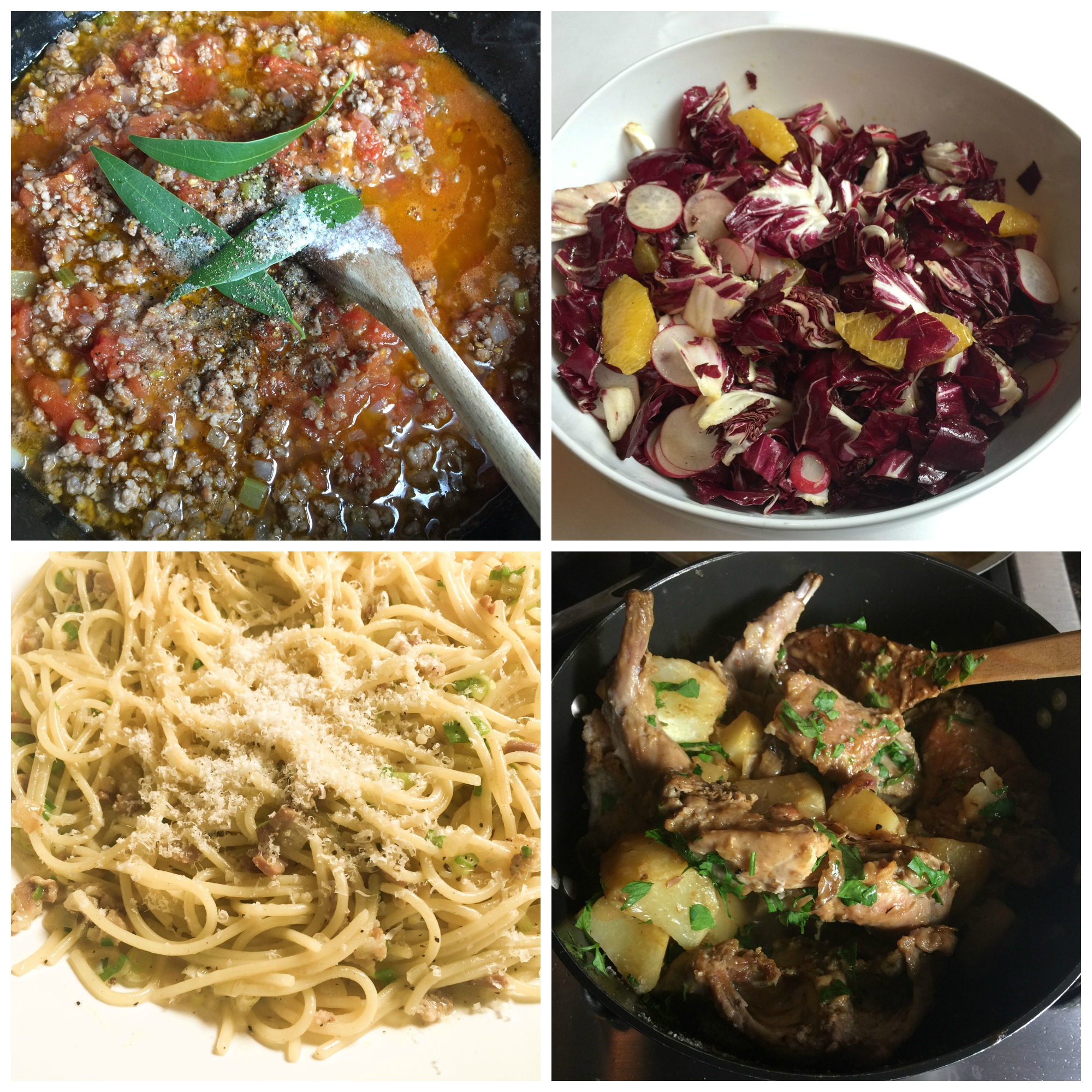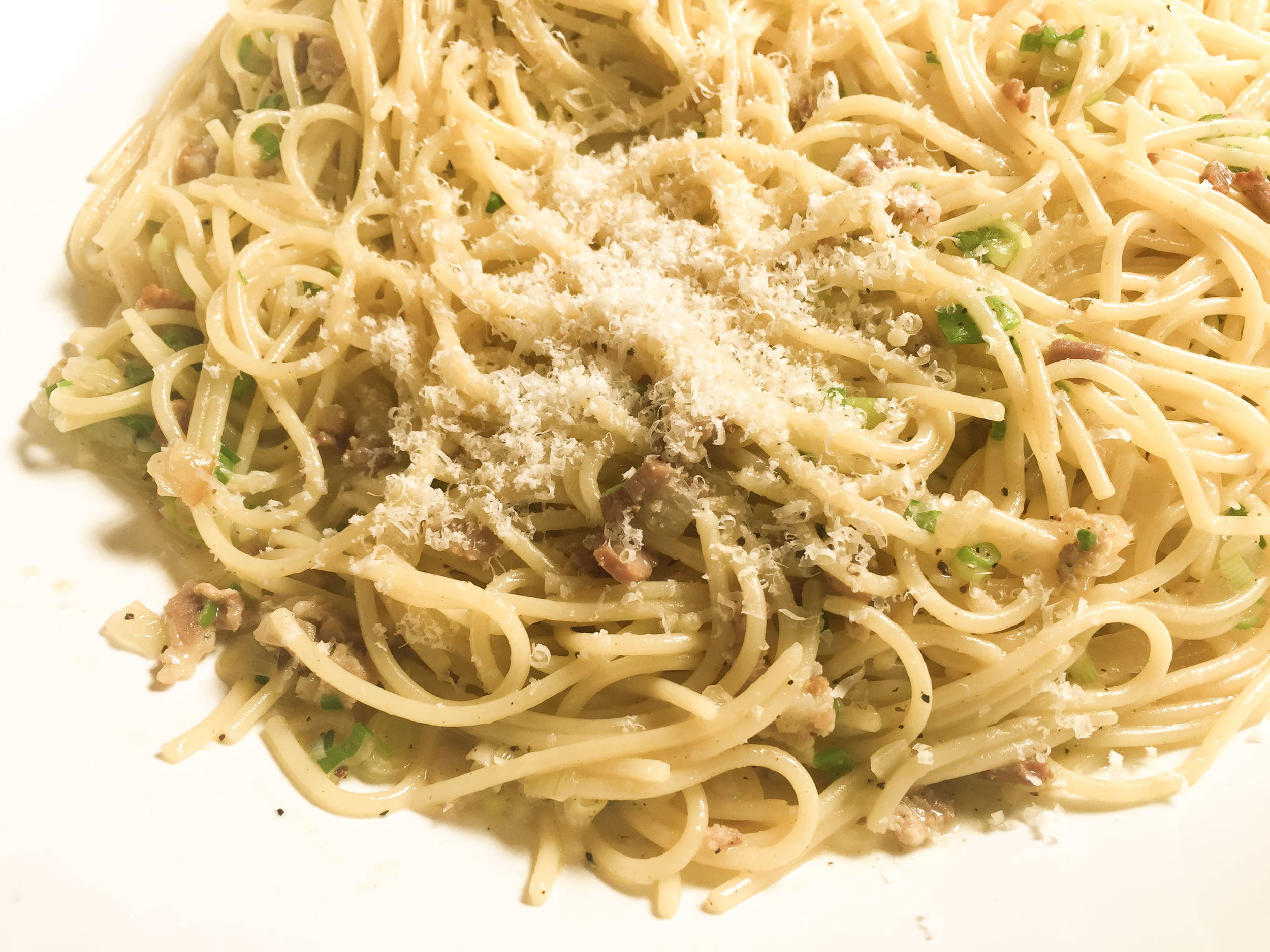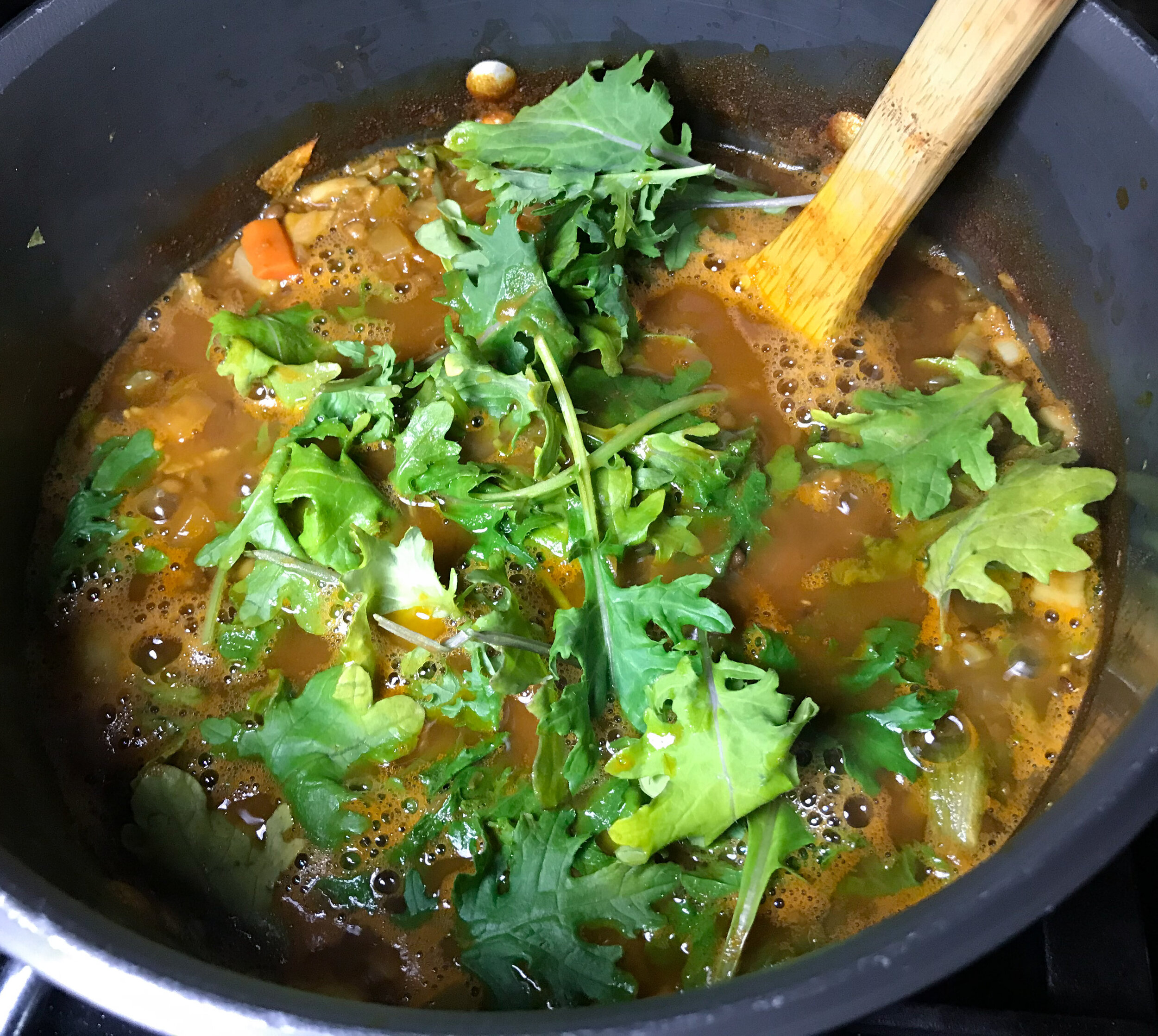My version of Chicken and Lamb Couscous — one of my favorite things to eat in the fall (and into the winter) — is absolutely unpedigreed; I didn’t turn it up from a Moroccan cookbook; it wasn’t taught to me by a Tunisian friend.
Rather, way back when I was 20 or 21, a friend gave me a copy of one of the awesome Time-Life The Good Cook cookbooks — the one titled Pasta, which had just been published. Tucked between sections about rolling out fresh pasta dough, stuffing and cutting ravioli and layering lasagnas was one called “Couscous: A Full Meal from One Pot.” Couscous was included because couscous grains, made from semolina flour, are technically pasta. Pictured and explicated was the process of achieving a magnificent-looking platter of couscous topped with a saffron-and-cinnamon-scented stew of lamb, chicken, vegetables and chick peas.
I was instantly captivated. My only experience with such a dish at that point was feasting on it at two then-well-known Los Angeles restaurants, Dar Mahgreb and Moun of Tunis. The book showed how to dampen the grains, rake the moisture through with your fingers, steam them in a couscoussier (real or improvised), make the stew and serve it with harissa and a tureen of broth.
As anyone who has ever used the books in that (long out-of-print) Time-Life series knows, they are technique-based, with lots of step-by-step photos, and recipes only at the end. So literally for decades, I’ve made this couscous by following that rough guide, guessing at the amounts of ingredients, tweaking and changing things over the years, without looking at an actual recipe. I followed brief and sketchy instructions in a sidebar to make harissa.
When you think about it, it’s actually the way you learn to cook at home, if you have a parent who cooks teaching you: a little of this, some of that, until it looks like this. It’s why I treasure the series, a project that was overseen by Chief Series Consultant Richard Olney.
What I love about this chicken and lamb couscous is that you can make it as simple or as complicated as you like. Make your own harissa — soaking and grinding dried chiles and spices — or buy a tube (it’s really good). Go through the extraordinary process of moistening and rubbing and steaming couscous grains two or three times, or make a box of instant couscous in five minutes flat. Soak dried chickpeas overnight and simmer them for hours with the lamb and chicken, or add a couple cans of chickpeas toward the end.
You can buy harissa — the fiery North African chile sauce — in a tube, can or jar — or make your own.
And you know what? No matter how many shortcuts you take, the dish is always glorious — even if it isn’t faithful to any particular traditional recipe.
So why would anyone go through the trouble of making the couscous the longwinded traditional steamed way? Because it’s much lighter and flufflier. (More about that in a future story.)
Our recipe is a two-fer, offering the easiest possible version and a more elaborate one. Go either route — or choose the elements from each that appeal. Most often, I use dried chickpeas, but take the quickie route with the couscous grains, using instant. Every couple of years I make a batch of homemade harissa, which I use if I have it. (We’ll feature a recipe here soon!) Otherwise, I’m happy to use store-bought, a condiment I always like to have around. My preferred brand is one that comes in a tube, Dea from France; I also like one Trader Joe’s sells in a jar, from Tunisia.
The stew itself is made by simmering lamb and chicken pieces with onion, carrot, spices (including harissa), tomatoes and cilantro, then adding turnips, more carrots, zucchini and roasted red pepper. As mentioned, the chickpeas get simmered with the meats (if they’re dried) or added with the zucchini (if they’re canned). Optional roasted winter squash is added on top, along with grilled merguez sausages (also optional).
Stick with the amounts of vegetables or meats I suggest, or adjust them up or down, depending on what you have on hand. Do you prefer white meat chicken to the legs and thighs the recipe suggests? Swap ‘em. Want to toss in some yellow crookneck squash? Do it.
One moving target for me over the years has been winter squash. I’ve never been crazy about the boiled pumpkin The Time-Life book suggested. At some point I started roasting acorn squash, adding that at the end, but lately I’ve been using delicata squash — which I love because the flavor’s beautiful and the skin is very tender. Other times I do without.
To serve the dish, pass the platter of couscous piled with meats and vegetables around the table, along with a separate pitcher of extra broth, and a dish of harissa. Diners help themselves to the grains and stew, pouring on as much extra broth as they like. Pro tip: place a small dollop of harissa in your soup spoon, stir in some broth to liquify it, and sprinkle it over the stew.
Honestly, it’s pretty dreamy. The batch is gigantic, which is great if you’re feeding a big crowd. Use less meat and water, if it sounds too big for your crew. That said, it is just as delicious the next day. Or two. Or three. I enjoy the leftovers as much as round one.
Hope you enjoy it as much as we do.














































































